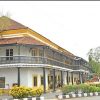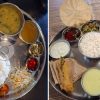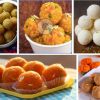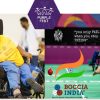Goa is abuzz with excitement as vintage bike and car owners, users, collectors and fans are decking […]
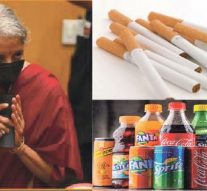
40% GST ON COKE, PEPSI ROUGH RIDE FOR HARLEY BIKE!
Cover Story, Sep 06- Sep 12, 2025 September 5, 2025India is struck back against the 50% import duty on Indian exports by Donald Trump. As part of the restructuring of the GST the finance minister has imposed a 40% GST on all fizzy drinks. What this means is that Coke and Pepsi and Harley-Davidson bikes will cost 40% more from September 22, when the new GST rates will come into force. However, fruit beverates mostly made by Indian companies like Real will not attract any GST. The GST on medical insurance and diagnostic equipment’s like thermometer and diabetic strips has been reduced to 5%. There will be no GST on school material like pencils, erasers, notebooks, etc.
FINALLY, Narendra Modi’s double-engined government has made the general services tax (GST) a little more citizen-friendly. Over the years GST has become the biggest burden on the common man, woman and child. This is because unlike income-tax or wealth tax GST is a tax on every aspect of people’s life. What we eat is taxed. All that we drink is taxed. All that we breathe is taxed. You cannot withdraw money without being taxed. You cannot spend money without being taxed. Not only on luxuries and what finance ministers describe as “sin goods” such as cigarettes, alcohol and gambling. GST was forced on every citizen of this country however humble they may be, every time they bought anything from salt to sugar to oil to “vada-pau” to biscuits.
In the long-awaited restructuring of GST relief has been provided to the common man, the middle-class and even the rich. There will be a significant saving on day-to-day essentials like hair oil — which every Indian is fond of using for personal grooming. Going by all the advertisements of brahmi oil and other brands which have been promoted by the likes of Amitabh Bachchan. The GST on hair oil, shampoo used by the middle class, also toothpaste including Patanjali’s “Kantadanti” and all brands of toilet soap, toothbrushes and shaving cream have come down from 18% to 5%.
You will now be able to apply more butter on your toast and ghee to your dal and pulao with the GST coming down from 12% to 5%. All the Gujus can eat as much farsan as the GST on pre-packaged namkeens is down from 12% to 5%. Never mind if Lays chips made by Pepsi also benefits. You may buy a few more kitchen utensils to make life easier regardless of whether they’re of brass, stainless steel or aluminium — with the GST coming down from 12% to 5%. Mothers, including expectant mothers, may smile as baby feeding bottles and napkins for their babies, and clinical diapers, will be cheaper, as the GST comes down to 5%. I hope this concession will be extended to adult diapers too.
RETURN TO TAILORING!
TAILORS should be happy as the cost of sewing machines will go down following a cut on duty from 12% to 5%. The biggest cheer is limited to individuals taking health and life insurance policies and school children. The GST on health and life insurance has been reduced to nil. Perhaps senior citizens may now afford to renew their health insurance policies. In a boost to education and major reduction in the burden on parents with school-going children, the cost of consumer goods has come down to zero GST.
So there is no GST now on pencils, sharpeners, crayons, exercise books and erasers. Actually this is not such a big relief, as even infants now take happily to mobile phones and tablets, graduating to laptops by the time they are in middle school. These will undoubtedly help in managing government schools and also in rural areas. Parents may also buy education aids like maps, globes and charts.
I recall that when I was growing up through my school-going days parents used to present children with globes, to enable them to realize that the world is round and to identify various countries which they might want to migrate to one day if life becomes impossible to live in home country India. There is also a major relief for patients and doctors as all diagnostic kits such as blood sugar testing gadgets (glucometers and diabetes tests strips) and all pathological tests will attract only 5% GST as against the 12% hitherto. Spectacles will also be cheaper and seniors may go get a second pair for emergency use if the first takes a fall and breaks and they can’t see clearly.
TO revive demand for consumer deliveries and electronic entertainment items, the GST has been reduced from 28% to 18% on all television sets. Similar cuts have been effected in the case of air-conditioners and dish washing machines. We do not know of housewives or homemakers in India use dishwasher machines widely. There is no clarity on whether the more widely used washing machines are included in the GST cuts here.
AGRICULTURE BOOST
AGRICULTURE which is languishing in most parts of the country and is virtually dead or dying in Goa gets a boost. The duty on tractors has come down from 18% to 5%. That on bio-pesticides but not on chemical pesticides is also down from 12% to 5%. All equipment, used in agriculture and horticulture, including drip irrigation sprinklers, will cost much less with the GST falling to 18% from 28%.
Presumably, the government both at the Centre and the State are admitting that public transport is inadequate and inefficient. Narendra Modi and Nitin Gatkari want to promote self-reliance in transport. The GST on motorcycles, which we hope includes scooters, has been reduced from 28% to 18%. Small cars and particularly hybrid LPG and CNG cars not exceeding 4000mm and 1200cc will be cheaper, as the GST has come down from 28% to 18%. Similarly, diesel cars will also be cheaper.
Even the large cars like SUVs will cost marginally less, as the duty is down from a whopping 50% to 40%. Electric vehicles will continue to attract GST of only 5%. The GST cuts are primarily aimed at the common man, the middle-class woman and youth, according to Prime Minister Narendra Modi.
However, there is not much relief for the hospitality industry which is the mainstay of tourism in Goa. The GST on “sin goods” such as gambling may go up to 50% much to the agitation of Jaydev Mody, owner of the Deltin Casino Group. Some consolation may be derived from the fact that import duty on premium liquor brands has been reduced. The changes will come into effect only from September 22, 2025.
IN CONCLUSION
THE 12% and 28% slabs of GST have been done away with. Only the 5% and 18% remain. The GST has been brought down to zero% on life and health insurance and education products. During the festive season you may bring home cars and motorcycles. Finance Minister Nirmala Sitaraman has particularly stressed that paneer which is a favorite of north India will attract zero GST. You may also feast on almonds as the GST is down from 12% to 5%; similarly, dates soft and hard, pineapples, and mangoes, will be cheaper. In a major concession to Catholic Goans sausages will be cheaper as the GST will now be only 5%. You may indulge your sweet tooth as all sugar confectionary and chocolates and other foods containing cocoa will be much cheaper — as the GST has been reduced from 18% to 5%. I presume dentists will be very happy to hear this. Khakra, chappati and roti and even pizza bread will be totally exempt from GST, also Indian breads like paratha, naan, tandoori roti, etc, will attract no GST. However, you will have to pay the minimum GST of 5% on packaged water. Your Coca-Cola and Pepsi will now attract 40% GST instead of the earlier 28%.
The problem is that the GST burden major or minor affects everybody. Unlike income-tax you cannot avoid or evade it. There is no escaping it as it is added to the price of every product small and big. In fact, GST dadagiri has led to major resistance from the small vendors, vegetable vendors and grocery shops at street level, and even the hair cutting saloons, they may display QR codes for digital payment but are happier to receive hard cash if truth be told.
